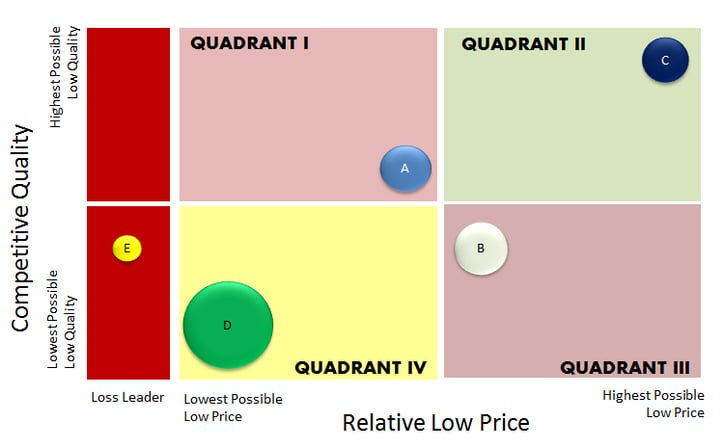
I have had several interesting opportunities working in industries that have business units selling products and services that become extremely commoditized. I am defining “extremely commoditized” as a situation where there are four or more competitors owning at least 80% of the market with a current average selling price that has decreased for 8 consecutive quarters. These industries include base chemicals, generic pharmaceuticals, and software-as-a-service (Saas). In each of the engagements, we have been working with managers to develop business leadership and business acumen skills that will help participants to make better business decisions and lead their teams and companies to success.
One of the greatest challenges these organizations face is how to successfully compete in mature, commoditized markets. “Traditional” business acumen skills and approaches typically emphasize finding some sort of “differentiation” to create strategic advantage. That is nice advice, but it doesn’t provide the complete answer. After conducting research, analysis, and speaking with industry leaders, I developed a different approach: an advanced business acumen perspective for understanding and developing a successful commoditized market approach.

As part of this advanced business acumen perspective, I created the Commoditized Market Analyses tool in which we can examine the relationship between Relative Low Price and Competitive Quality.
Relative Low Price already assumes that the price is going to be very low. The question is how low? To help answer the question, I introduce the extremes of a low pricing strategy; offering customers the highest possible low price and the lowest possible low price.
Competitive Quality assumes the perceived and actual quality of the product/service is going to be low, but at least at a baseline that we can call “passable quality”; in other words it will work at some sort of minimal level. The question is how low can this passible quality can go? To help answer this question, I introduce the extremes of the lowest possible low quality and the highest level of low quality.
This tool provides four quadrants of choice for positioning and strategy which include the following dynamics:
Quadrant I – Highest Possible Low Quality at the Lowest Possible Low Price
This is one of the two worst quadrants to be in. Although customers love this quadrant, and sales professionals may feel compelled to position their value proposition here, it is extremely difficult to make money in this quadrant long term.
Quadrant II – Highest Possible Low Quality at the Highest Possible Low Price
This is the best quadrant to be in as it is a win-win value proposition for your customers and your company. It is the equilibrium point where the customer gets the best value and your company can make a small margin to sustain operations.
Quadrant III – Lowest Possible Low Quality at the Highest Possible Low Price
This is another bad quadrant to be in as basically you are offering your customers the lowest quality at the highest relative price. In an advanced commodity market, customers won’t buy your product and that pressure will cause prices to be cut in a non-productive way.
Quadrant IV – Lowest Possible Low Quality at the Lowest Possible Low Price
This quadrant can only be successful with discipline and caution. The only way to be successful in this quadrant is by having extremely strong operational excellence and the ability to drive costs out of the system on a continuous basis.
The Loss Leader
Occasionally, an organization executing in a commodity market will make a strategic decision to sell a product/service at a loss. There are many reasons for this including the following:
- The loss leader is bundled with other more profitable products
- The loss leader fills factory capacity lowering the cost for other products
- The loss leader keeps competitors out
- The loss leader represents brand value that can’t be replaced
If you are in a business that is involved with commodity-type products, and have an opinion, let us know! We also have a free Quadrant tool for your own personal use! Just email us at james.brodo@advantexe.com to request your copy.




